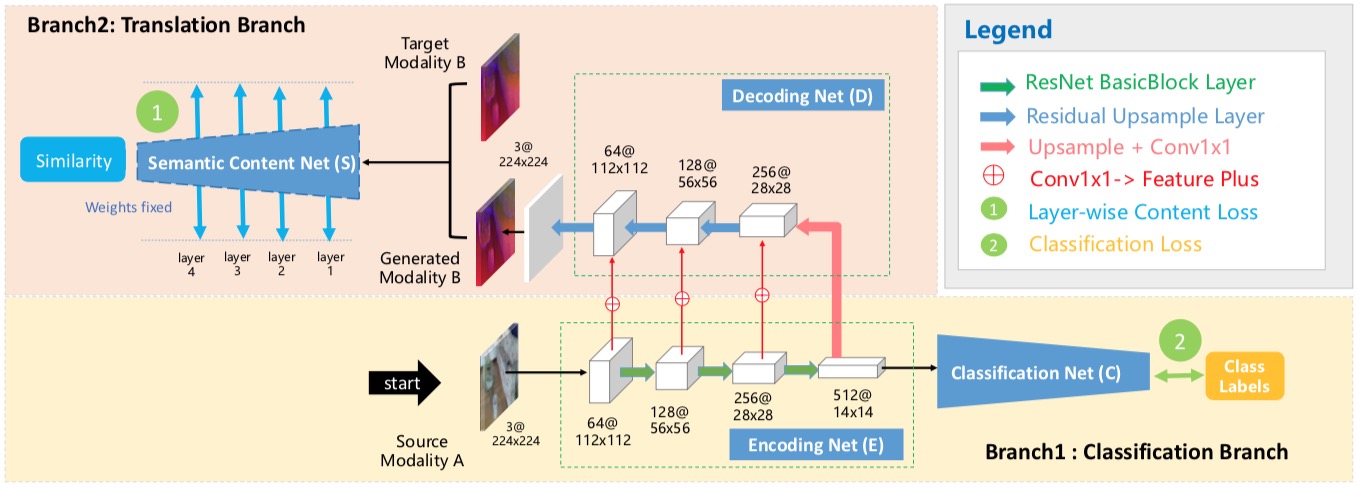Pytorch implementations of Translate-to-Recognize Networks for RGB-D Scene Recognition (CVPR 2019).
- Download Reset18 pre-trained on Places dataset if necessary.
- Data processing.
- We use ImageFolder format, i.e., [class1/images.., class2/images..], to store the data, use util.splitimages.py to help change the format if neccessary.
- Use util.conc_modalities.py to concatenate each paired RGB and depth images to one image for more efficient data loading.
- Configuration.
Almost all the settings of experiments are configurable by the files in the config package. - Train.
python train.pyor 'bash train.sh' (this will record log to saved file) - [New] New branch 'multi-gpu' (more recommended) has been uploaded, making losses calculated on each gpu for better balanced usage of multi gpus.
You could use this version using this command:
git clone -b multi-gpu https://github.com/ownstyledu/Translate-to-Recognize-Networks.git project_name - [New] In multi-gpu brach, we add more loss types in the training, e.g., GAN, pixel2pixel intensity. You could easily add these losses by modifying the config file.
- NVIDIA TITAN XP
- cuda 9.0
- python 3.6.5
- pytorch 0.4.1
- torchvision 0.2.1
- tensorboardX
Please cite the following paper if you feel this repository useful.
@inproceedings{du2019translate,
title={Translate-to-Recognize Networks for RGB-D Scene Recognition},
author={Du, Dapeng and Wang, Limin and Wang, Huiling and Zhao, Kai and Wu, Gangshan},
booktitle={Proceedings of the IEEE Conference on Computer Vision and Pattern Recognition},
pages={11836--11845},
year={2019}
}

